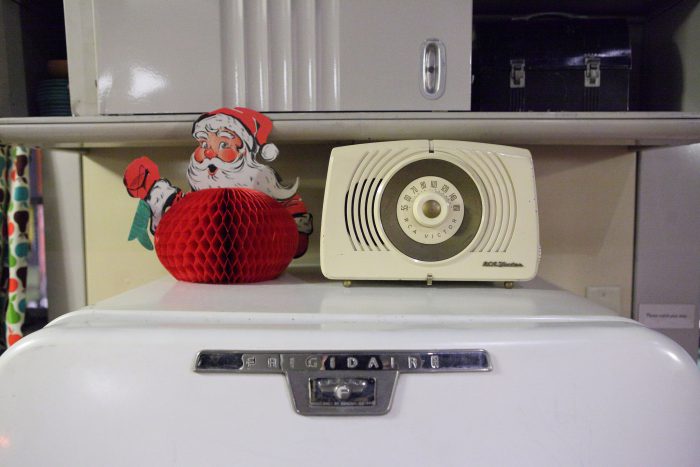
Here is a (far from complete) list of places where you can listen to NPR programming: Your old school radio. Your car radio. Your smartphone. Your smartwatch. Your Amazon Echo. Your Google Home. Your refrigerator?
If you own a Samsung Family Hub fridge (which features a giant screen on one of its doors), you can get a bulletin briefing of your calendar for the day, as well as an hourly news update, via NPR. (That’s in the United States. In Europe, the news partner is Upday; in Korea, it’s Kakao.) “Folks in the building have the same questions. I heard somebody talking about the fridge the other day — ‘Is that true, we’re on a fridge?’ I said, yeah,” Ha-Hoa Hamano, NPRs senior product manager, told me, amused at my excitement. (Full disclosure: I have an explicable obsession with this fridge thing, which we first wrote about here five long years ago. I fixated on it when writing about Upday’s expansion across Europe, as well.) “But we take into consideration a lot when approaching these — the level of effort it takes on our part, whether the audience there makes sense for us, whether our audience is there already, whether we’re going to gain new audience from it. Generally, we try to get to ‘yes’ faster than we try to get to ‘no.'”Samsung is already a technology partner for NPR, and approached NPR with a list of Samsung devices — “the pitch for the fridge was that the kitchen is the new hub for family and entertainment interaction early in the morning” — they wanted to see offer NPR. NPR One is available on the newer versions of the Samsung Gear smartwatch; the fridge integration was an easy extension.
“As opportunities like these come up, we can talk monthly, or weekly at times. For a lot of upcoming things, sometimes it works out for us to collaborate super heavily on a project, but sometimes it’s a little more far-reaching,” Hamano said. “We have a super lean team, so sometimes it has to be, ‘yes, but not right now,’ or ‘yes, but this may take a lot more time.'” The core team that works with new platform projects is indeed lean: Hamano, the same legal team that looks over contracts with partners, a designer — “the same few people working on a dozen of these projects at once.”
The NPR One API facilitates some of these partnerships. Through its API service, advertising (er, sponsorships) are built in for devices with or without screens.Its developer center is open, and developers working on projects of any scale can first dip their toes into what having NPR on a certain device might look like. Then there’s a formal queue (of mostly of inbound requests) that ranges from kickstarted startups designing a quirky little device that allows for hands-free control of a phone to larger projects, like fridges and Lexus cars. The kickstarted device, for instance, “went out and ran a beta with users on personal keys for as long as they could, and when they were ready, came to us for full certification,” Hamano said.
Some projects, like an NPR One radio made using a Raspberry Pi, don’t require any commercial licensing, and any interested tinkerer is free to create their own little radio for personal use, a project that doesn’t require tech review and legal certification on NPR’s part.
Combining @Raspberry_Pi and @NPR radio? @adafruit obviously knows the way into my heart: https://t.co/JHtu3mMPXm pic.twitter.com/pLEuxgw3cC
— Shah Selbe (@shahselbe) April 23, 2017
On its end, NPR has to be cautious about maintaining technical standards for partner platforms, since “we definitely don’t want to be out there on a platform where users are super frustrated and think issues are coming from NPR when it’s a problem with the device,” Hamano said. Sometimes tech partners will pass along bug reports from users. (So far, there hasn’t been a technical failing serious enough to cause NPR to pull out of a partnership.) With projects like NPR on Amazon’s Alexa, keeping up with the evolving features of the platform itself is a challenge on its own.
Diehard NPR One or NPR app users, for instance, want specific features — being able to binge-listen podcasts in a preferred order, for instance — or want the exact same experience in their NPR app as on their Amazon Echo. A few listening habits have emerged there, according to Hamano, such as heavy usage on weekday mornings (halved on weekday evenings) and most usage shifting an hour or more later on Saturday and Sunday mornings.
“With all these platforms, it is a challenge for us to figure out: Is it the platform? Or is it the product?” Hamano said. “We always try to keep our baseline metrics about audience size and listening hours, and stay lean in terms of reacting to what audiences tell us needs to be addressed.”